This article will guide you through the step-by-step process of how to connect your MediaGo account to TheOptimizer Native.
The article is organized in 2 parts:
Part 1: What does this integration offer?
Part 2: Connecting MediaGo Part 3: Link a tracking platform to MediaGo (optional)
➡️ What does this integration offer?
After connecting MediaGo to TheOptimizer, you will be able to manage all your campaigns directly from TheOptimizer. Here are a few things you can do:
- Manage Campaigns
- Accurate Campaign level metrics (spend, revenue, conversions, etc) from both MediaGo and any connected tracking platform or revenue stream
- Start/Stop campaigns manually or automatically using rules
- Update campaign budgets manually or automatically using rules
- Manage Ads
- Accurate Ad level metrics from both MediaGo and any connected tracking platform or revenue stream
- Start/Stop Ads manually or automatically using rules
- Manage Sites
- Accurate Site level metrics from both MediaGo and any connected tracking platform or revenue stream
- Start/Stop Sites manually or automatically using rules
- Update Site CPCs manually or automatically using rules
- Dayparting
- Decide which days of week and hours of days you want your MediaGo campaigns to run or get paused
- Reporting
- Generate Campaign, Ad or Site level reports across all your connected MediaGo accounts, and unlock hidden isights or trends
💡 NOTE: All the above actions can be performed manually or it can be automated using Rules. Rules can be setup to do a specific action with regular intervals, if certain performance conditions are met.
Rule example 1: Pause campaign if spend in the last 3 days >$100 and Revenue=$0. Execute every hour.
Rule example 2: Increase Site CPC if ROI in the last 7 days >50%. Execute every 30 minutes.
➡️ Connect MediaGo
Once you have successfully logged in to your TheOptimizer Native account, click on the Account Wizard on the left-side panel of your screen then follow the 6 steps below.
Step 1: When on the Account Wizard page, click on Add New button.
Step 2: On the pop-up integration, click on the traffic source drop-down list and select MediaGo.
Step 3: Enter a friendly nickname for the ad account you are connecting in order to easily identify it later Step 4: Select the timezone of your MediaGo Account.
Note: This timezone should be the same as the timezone your MediaGo account is set up. By selecting a different timezone here it will not update the real timezone of your MediaGo Account
Step 5: Enter the API key of your MediaGo Account.
Note: Contact your MediaGo account manager to get the API Key.
Step 6: Select the currency of your MediaGo account
Note: The selected currency should be the same as the currency of your MediaGo account. TheOptimizer does not perform any currency conversion.
Click Save to complete the integration.
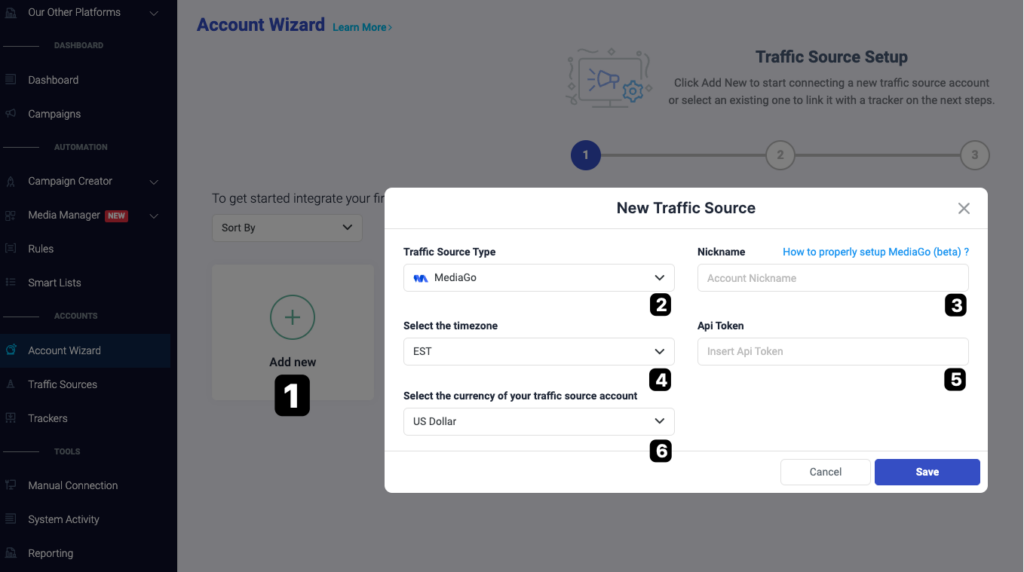
➡️ Link a tracking platform to MediaGo (Optional step)
💡 NOTE: This step is optional and only applies if you are also using a click tracking platform to track the performance of your MediaGo campaigns. If not you can skip this step by clicking “I do not use a tracking platform”
💡 NOTE: For the sake of this article we are using ClickFlare tracker (our recommended tracking platform), but the same steps apply to all tracking platforms that we support. Click here for more details on how to connect a different tracking platform.
After you have finished connecting your MediaGo account in the first step of the Account Wizard process, you can click Next to connect your tracking platform in order to have both traffic source and tracker data aggregated in one place.
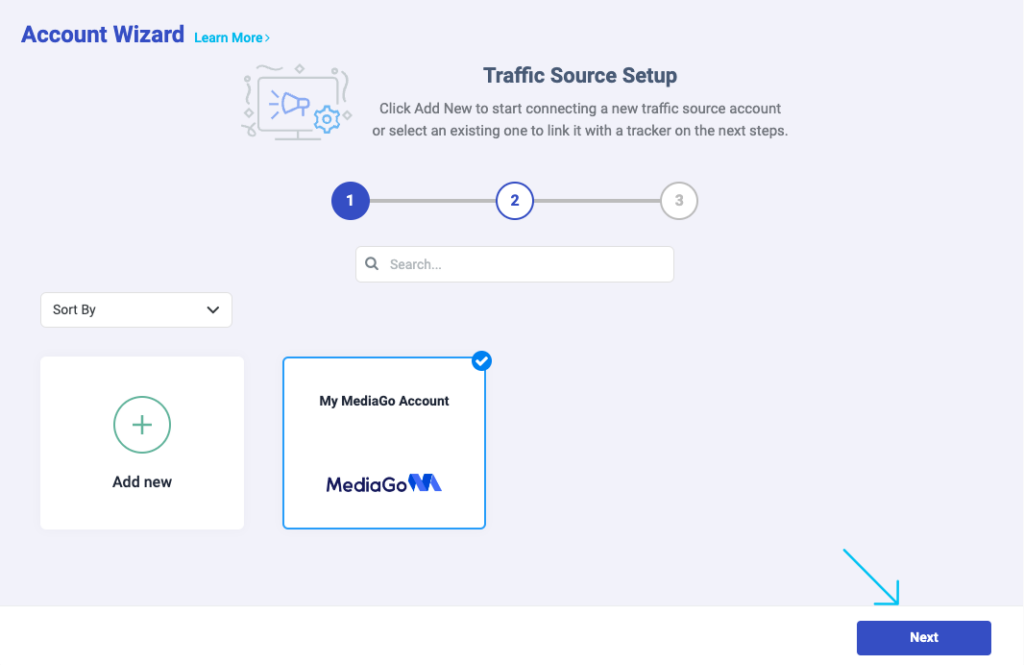
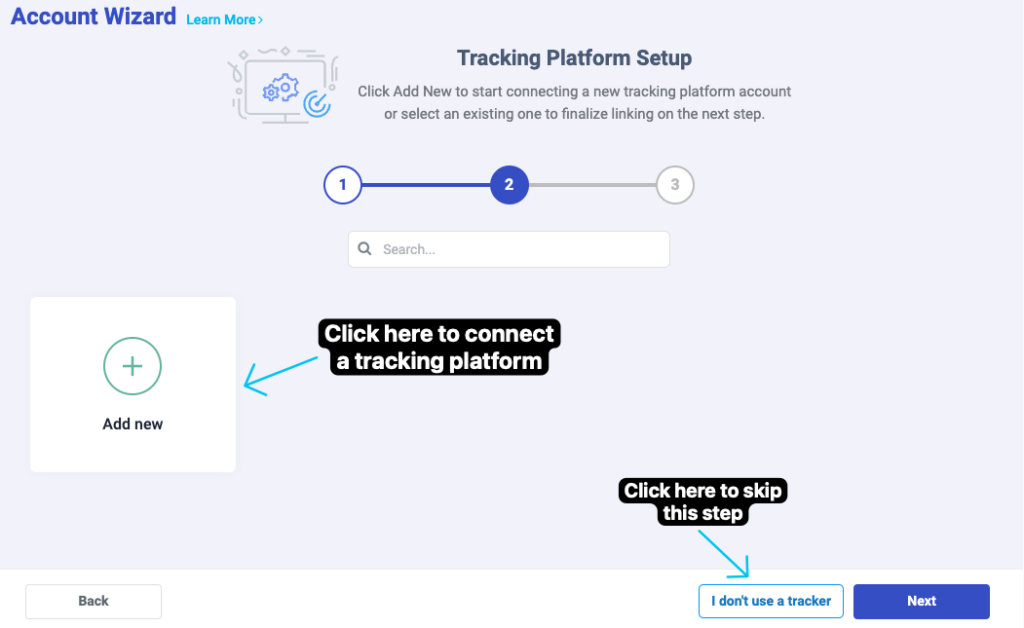
Follow the steps below to connect your ClickFlare tracker account to TheOptimizer Native.
Step 1: When on the Account Wizard page, select a traffic source account and then click Next.
Step 2: In the second step of the Account Wizard, click on Add New to start connecting your ClickFlare account.
Step 3: On the pop-up integration screen, click on the Select Tracking Platform drop-down list and select ClickFlare.
Step 4: Fill in the required information as noted in the screenshot below then click Save and Next to move to the next step.
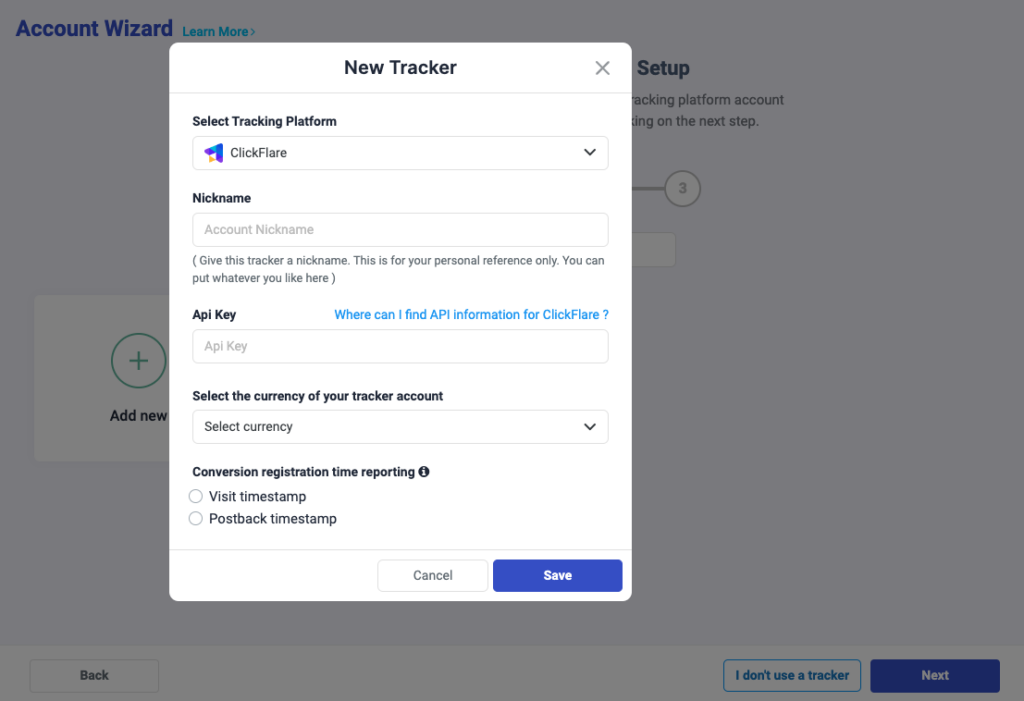
Required input information details:
– Nickname: Add a friendly, easy-to-recognize name for your ClickFlare tracker.
– Access Key: Access Key ID value as provided in ClickFlare (detailed below).
– Conversion registration time reporting: Specify the conversion registration timestamp setting according to your ClickFlare settings (ClickFlare General Settings).
– Currency: Select the currency defined in ClickFlare settings..
Step 5: In the third and final step, you simply need to specify which of the traffic source configurations found in your ClickFlare tracker you are using to track traffic for the MediaGo added in the previous step of the Account Wizard.
MediaGo Tracking Macros (these are the necessary MediaGo macros to use with TheOptimizer)
${CAMPAIGN_ID}
${AD_ID}
${SITE_ID}
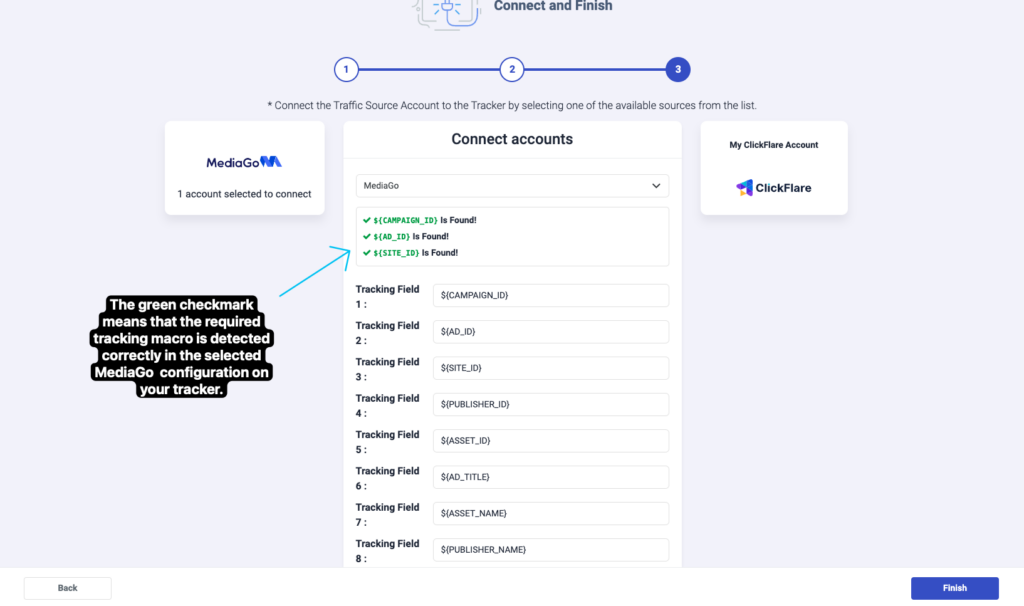
As you may notice from the above screenshot, all necessary MediaGo macros are marked in green. This means that all those macros are present in your ClickFlare config for Media, and were detected correctly.
✋ IMPORTANT: In case one of the required traffic source tracking tokens is missing in your tracker configuration, then the necessary steps to fix this are:
(for example if ${CAMPAIGN_ID} macro is missing, you will get it in red)
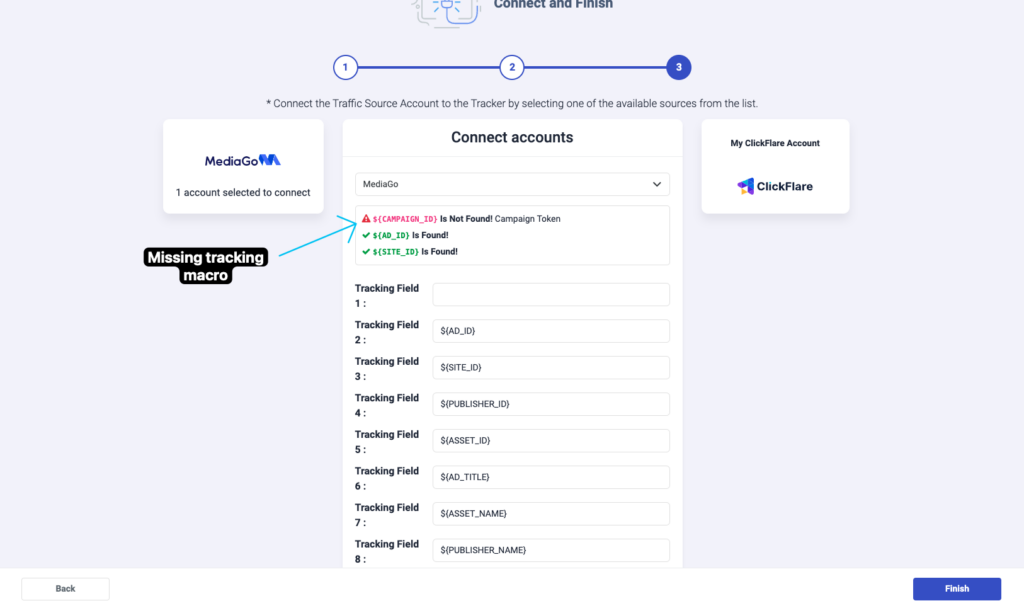
- Log in to your tracker, edit the traffic source and add the missing macros
- Come back to TheOptimizer, refresh the page where you left and continue the integration process. Now you should see all tokens in Green.
